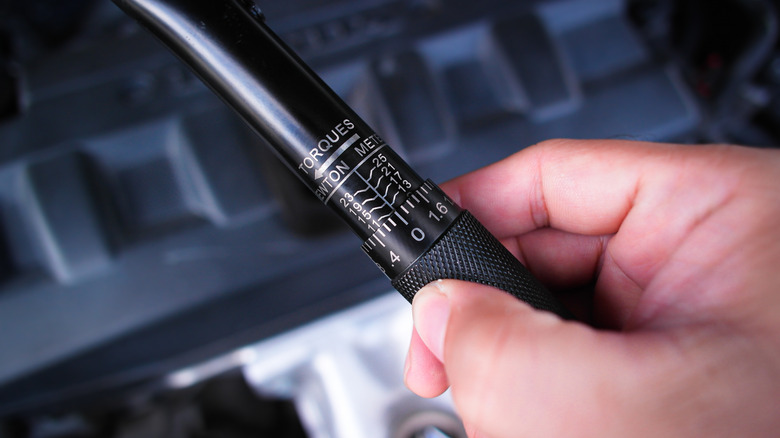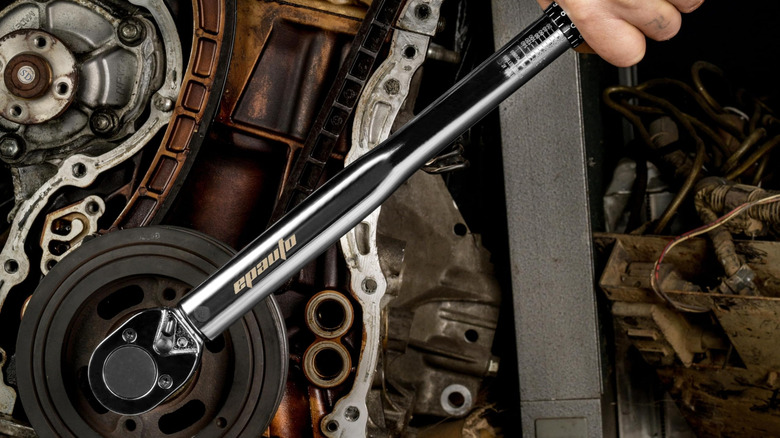What Is The 20 Percent Rule For Torque Wrenches?
We may receive a commission on purchases made from links.
It may look like a fancy ratchet, but a torque wrench's more elaborate mechanism adds a crucial feature: measurement. It replaces the guesswork of tightening a bolt by feel with the certainty of applying a specific amount of force to a fastener. That precision is vital, because you want parts held together with the perfect amount of clamping force. This brings us to a golden guideline known as the 20% rule.
The rule is an important factor for getting the most out of your tool. It suggests you should only use a torque wrench within 20% to 80% of its total capacity for maximum accuracy. For example, if your wrench is rated for 150 lb-ft, you should avoid using it for any job that requires less than 30 lb-ft. Many manufacturers explicitly warn that readings below that 20% threshold may not meet the tool's stated accuracy. Some guides are also a bit more lenient, stating the optimal range is anywhere from 20% all the way to 100% of the wrench's full scale.
The logic behind this is simple physics. All torque wrenches work based on a principle called Hooke's Law, which connects how much a flexible material deforms to the force acting on it. At the extreme low end of a wrench's scale, the mechanism is less sensitive, and at the very top, the internal components might become less responsive.
Operating within that 20% and up sweet spot ensures the tool is in its most dependable state. Following this guideline also reduces wear on the internal mechanics, which gives your expensive tool a longer, happier life. At the same time, it also boosts the quality of your work and the safety of whatever you're building or fixing.
Other stuff to keep in mind
Beyond the 20% rule, a few other habits will keep your torque wrench in fighting shape. The first thing to keep in mind is to think of the tool as a precision instrument, not a hammer. Due to its nature, a hammer never really loses its precision, but the torque wrench can and does lose its accuracy over time due to normal wear and tear.
For this reason, industry standards suggest getting your wrench calibrated professionally. The general consensus is a check-up every 6 to 12 months or after 5,000 cycles of use. This ensures the torque value you set is the torque value you're actually getting.
How you store the tool matters a whole lot, too, especially for the common clicker style wrenches. It's best practice to dial the wrench down to its lowest possible setting after each use. This action takes the tension off the internal spring, which is crucial for prolonging the life of its calibration. Again, just be sure you don't adjust it below the minimum scale marking, which is typically that previously mentioned 20% value.
A couple of quick usage tips can also make a big difference. You should always pull the handle smoothly instead of jerking it, which can throw off the torque value. Also, try to follow the right torque techniques for things like lug nuts. If your wrench has been sitting unused for a bit, it's a good idea to work it about five times at a medium setting to get the internal grease moving again before you put it to work. These little things will ensure you get consistently accurate results every single time.

